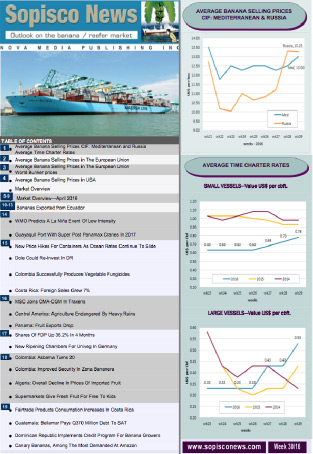Maersk Announces Rate Hike
2024-03-08

Maersk has announced a rate increase for all types of cargo originating from India and West Asia. According to a trade notice, cargo en route to US and Canadian ports will be subject to a $1,000 fee per container starting from March 2, 2024.
This announcement has raised concerns among shippers about its potential impact on trade. Notably, since the onset of the Red Sea Crisis, shippers have been grappling with delays in cargo reaching US destinations. With Maersk’s decision to increase container rates, shippers anticipate other shipping lines to follow suit. This expectation stems from the fact that the detour via the Cape of Good Hope at the southern tip of Africa results in a 15-day delay in cargo reaching their destination from Asia to Europe and further to the US.
In December 2023, CMA CGM more than tripled its freight rates for all types of goods. The Freight All Kinds (FAK) rate increased to $4,750 per Twenty-Foot Equivalent Unit (TEU), up from $1,000 two months prior. These rates encompass basic freight and bunker-related surcharges.
Typically, rate increases vary for containers of different sizes, such as a 20-foot box or a 40-foot box. However, Maersk’s rate will be uniform across all types of containers, as stated by an official from a large freight forwarding company.
Currently, freight charges for a 20-foot container to the US stand at around $4,200. For suppliers operating on a Free On Board (FOB) basis, the rate increase does not affect the delivery of goods. Under FOB terms, freight charges are negotiated in India, and the buyer is responsible for payment.
However, shipping goods on a Cost, Insurance, and Freight (CIF) basis poses a higher risk, as the supplier assumes the cost of shipping and insurance. Any rate increase must be absorbed by the supplier.
The Red Sea crisis has also adversely affected Indian exporters. The detour around the Cape of Good Hope entails additional time and cost for major container lines. Operating costs are estimated to have risen by an additional $1 million due to the detour. The increase of $1,000 per container on a vessel with a carrying capacity of 18,000 TEUs amounts to $18 million. This increase applies to a one-way trip from Asia to Europe.
Experts attribute the steep costs of visiting India to a lack of national capacity. The Red Sea, a crucial waterway for global trade, particularly for transporting goods between Asia and Europe, handles nearly 12 percent of global trade.









